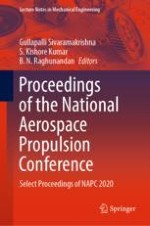2023 | OriginalPaper | Chapter
Design and Performance Evaluation of Plug Nozzle for Rotating Detonation Wave Engine
Authors : V. Ramanujachari, Rahul Dutta Roy, P. Amrutha Preethi
Published in: Proceedings of the National Aerospace Propulsion Conference
Publisher: Springer Nature Singapore
Activate our intelligent search to find suitable subject content or patents.
Select sections of text to find matching patents with Artificial Intelligence. powered by
Select sections of text to find additional relevant content using AI-assisted search. powered by
